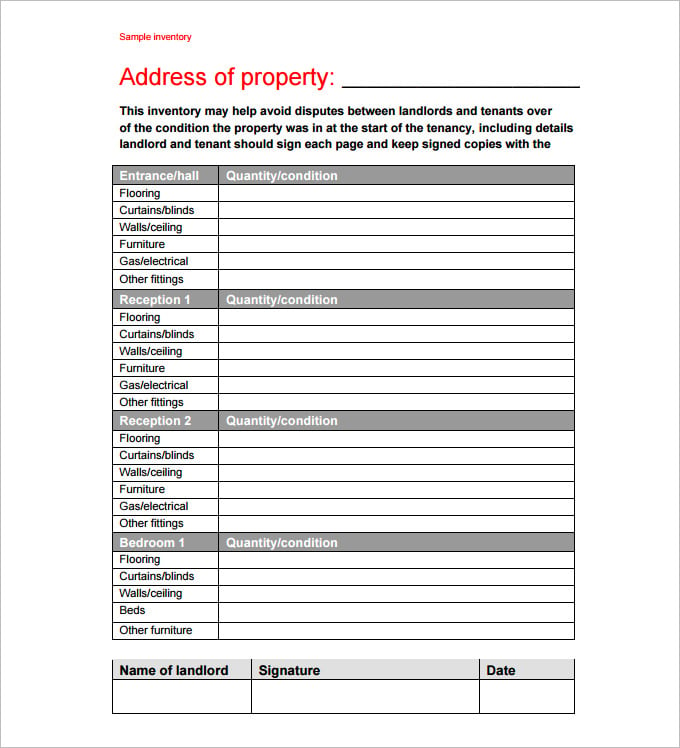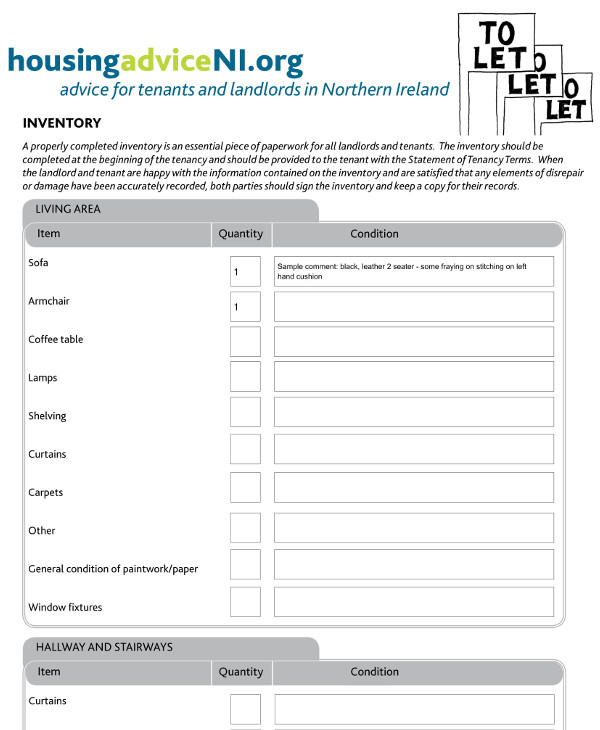
Ideally, these two documents will be in the same form, so it’ll be relatively straightforward to compare the two pieces of paper and figure out if there are any discrepancies. When Do You Need To Make One?Ī thorough property inventory should be taken at some point before the tenant moves in, and again on the day the tenant moves out.
#RENTAL HOME INVENTORY CHECKLIST FREE#
Many inventories include digital photographs to accompany the written information.ĭownload a free inventory template form. It’s worth taking the time to do things right the first time when it comes to legal matters, and property inventories are no exception to the rule.

Given that it’ll serve potential legal purposes, it’s important that each document is signed and co-signed correctly. The document itself must be made into two copies, one for the tenant and one for the landlord. In some cases, communication may not be as flawless as everybody would like - in those situations, it may be necessary to involve a bailiff, although obviously this isn’t ideal for either party. How Do You Create An Inventory?Īn inventory can be created by the collaboration between the tenant and the landlord, although it’s worth mentioning that an agent can act in place of the landlord if need be. We’ve decided to come up with a guide to creating a property inventory, in order to streamline the process as much as possible and make it easy for you to create your own inventory. It’s also a great way to save time between one tenant and another since you won’t have to spend too much of your time going around trying to find things that might be broken or could need fixing before the arrival of your next tenant. Why Are Inventories Useful?Īs well as preserving your property, this is a way to make sure that you and the tenant are on the same page when it comes to potentially damaged items.īy creating a thorough property inventory, you’ll be able to make sure that anything that gets broken will be repaired by your tenant since you’ll be able to prove that the item was unbroken before they moved in. It can be worthwhile to create an inventory for any kind of space you’re looking for potential tenants to occupy, be that a residential or commercial area, or even a plot of land like a parking lot or a potential building site. Regardless of whether you’re a landlord with a number of properties, a private owner looking to rent out their apartment for the first time, or somebody who makes a living renting houses, it’s vital that you have an exhaustive list of every single item potential residents in your home are likely to come into contact with.īasically speaking, an inventory is an extensive list of items you already have within the property you’re looking to rent. There are a number of different homeowners who will want to make sure they perform a property inventory before getting on with selling their place.

If the rental property includes outdoor areas such as a balcony, patio, or garden, note the condition of any furniture, plants, or other items provided by the landlord.A property inventory is a record of all the things that you own in your house. Note the condition of any blinds, curtains, or other window treatments provided by the landlord. Test smoke detectors and carbon monoxide detectors to ensure they are working correctly. Smoke Detectors and Carbon Monoxide Detectors:

Check for any leaks or damages.Įnsure all electrical outlets and switches are functioning correctly.Ĩ. Test all faucets, toilets, and showerheads to make sure they are working correctly. Lighting Fixtures:Ĭheck that all light fixtures are working correctly and that there are no burnt-out bulbs. Take note of any damages or missing parts.

Make sure all appliances are in good working order, including the refrigerator, stove, oven, dishwasher, and microwave. Check for any scratches, tears, or other damages. Note the condition of all furniture provided by the landlord, including chairs, sofas, tables, and beds. Ensure that the locks are functioning correctly.
#RENTAL HOME INVENTORY CHECKLIST WINDOWS#
Take note of any damages or stains.Ĭheck that all doors and windows open and close smoothly. Check for any marks, scratches, or scuffs on the walls and floors.


 0 kommentar(er)
0 kommentar(er)
